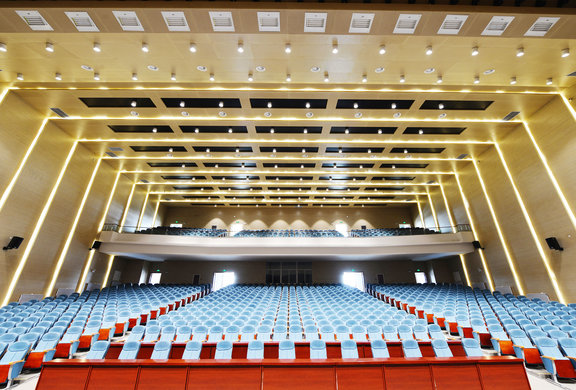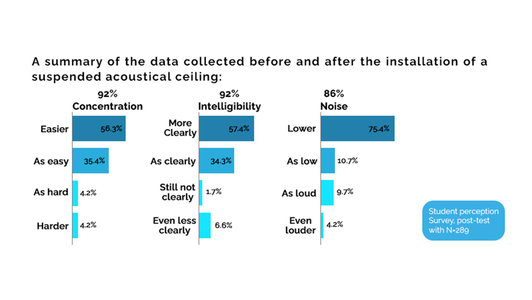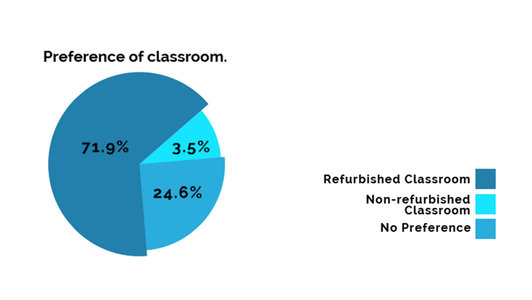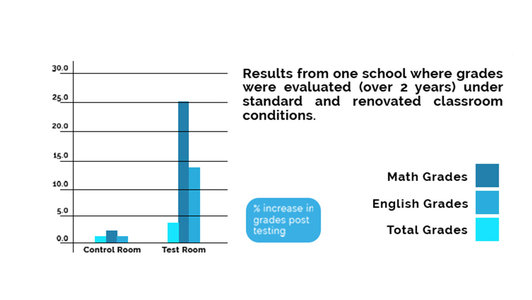
Importance of Good Acoustics in Schools
The objective of a school building is to provide a place for teachers to teach and students to learn and this requires both good acoustics and visual comfort, aspects fundamental to the learning process. The Green Campus Work Group conducted Evidence-Based Design (EBD) research across China to investigate the relationship between architecture, acoustics, and school learning in primary and middle schools.
EBD cases were also developed in more than a dozen schools that linked architectural acoustic design with student and teacher satisfaction. This was conducted to specifically understand the relation to the inclusion of acoustic treatment that would affect the reverberation and background noise in classrooms.
Designing typical classrooms to the Green Campus recommendations for both reverberation time (< 0.8 sec) and background noise (< 45 dBA) generally requires the application of a suspended acoustical ceiling with a minimum NRC rating of 0.60. To understand the influence of good acoustics, a survey was conducted over 10 years with about 290 students from 10 schools across China. The students were asked to compare furbished and refurbished rooms on certain parameters.
They were asked three questions specifically pertaining to concentration, intelligibility, and noise to determine the difference:
- Q1 - Compared to the non-refurbished room, how do you concentrate on the lesson in the refurbished room?
- Q2 - Compared to the non-refurbished room, how well did you hear the teacher in the refurbished room?
- Q3 - Compared to the non-refurbished room, how was the noise level in the refurbished room?
The results derived could be summarised as follows in the chart below:
Presentation to 12th International Conference on Green and Energy-Efficient Building and New Technologies, China GBC, “Acoustic Environment Investigation for Schools and Practice of Acoustic Design”, Session 23 Green Campus, Kenneth Roy, Ph.D., Beijing, China, 3-2016
Primary and middle school students also noticed and valued good acoustic design. The data is represented in the chart below:
Presentation to 12th International Conference on Green and Energy-Efficient Building and New Technologies, China GBC, “Acoustic Environment Investigation for Schools and Practice of Acoustic Design”, Session 23 Green Campus, Kenneth Roy, Ph.D., Beijing, China, 3-2016
Statistics were also collected from one school where student grades were evaluated over a 2-year period for both a standard classroom and a renovated classroom. The difference in grades in Mathematics and English leaves no doubt about the influence of the acoustics in the overall performance of the class.
Presentation to 12th International Conference on Green and Energy-Efficient Building and New Technologies, China GBC, “Acoustic Environment Investigation for Schools and Practice of Acoustic Design”, Session 23 Green Campus, Kenneth Roy, Ph.D., Beijing, China, 3-2016Presentation to 12th International Conference on Green and Energy-Efficient Building and New Technologies, China GBC, “Acoustic Environment Investigation for Schools and Practice of Acoustic Design”, Session 23 Green Campus, Kenneth Roy, Ph.D., Beijing, China, 3-2016


